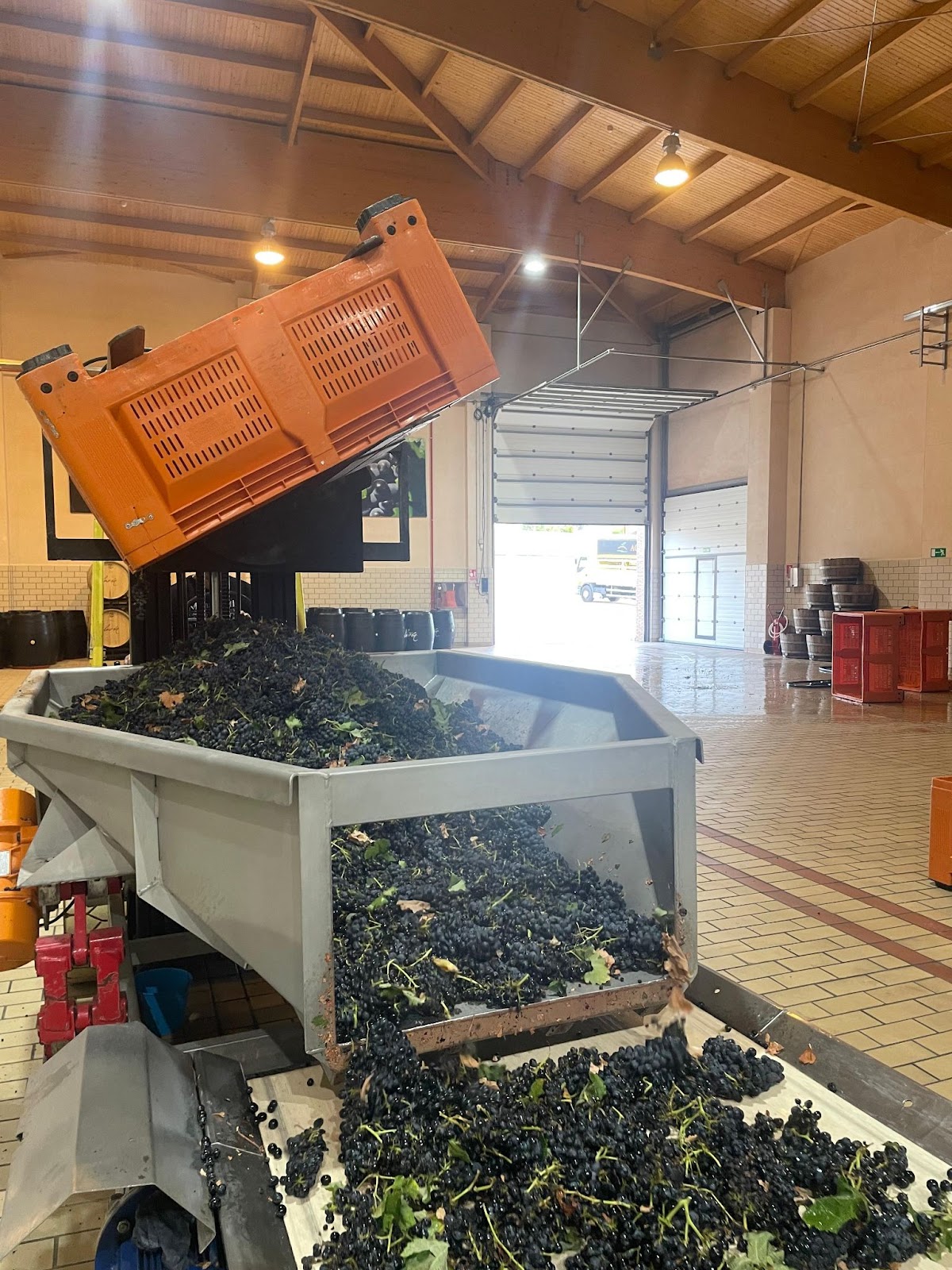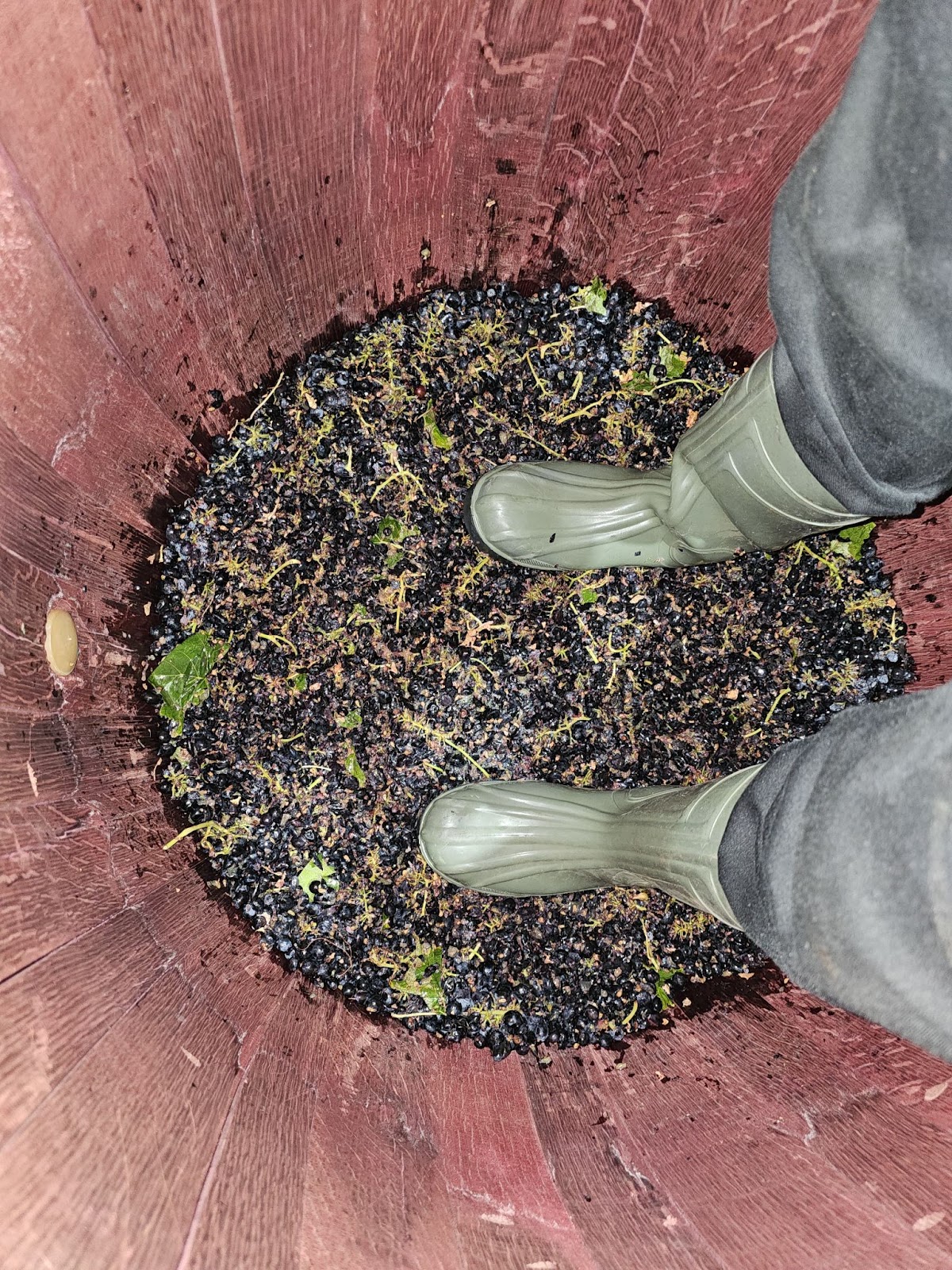The importance of the skins: a key factor in winemaking
We are in the middle of the grape harvest, that magical time of the year when our lands provide us with the fruit that, with time, dedication and passion, will become the soul of our wines. We would like to take this opportunity to focus on a fundamental aspect that often goes unnoticed but which is essential in the production of our wines: the skins. Although it may seem like just another layer in the grape, the skin is one of the main actors in the winemaking process, especially when it comes to red wines and the increasingly popular orange wines.
What are the skins?
The skin is the skin that envelops the grape, the thin layer that protects the pulp and seeds of the fruit. Although its appearance is modest, its function in winemaking is crucial. The skin contains a large part of the phenolic compounds, including tannins, pigments and aromas which, after a suitable maceration process, are transferred to the must, thus providing distinctive characteristics to the wines.
In red wines, it is the contact of the must with the skins during fermentation that gives them their colour, body and structure. But this same skin plays an important role in other styles of wine, such as orange wines, where the white grapes are subjected to a maceration process similar to that of red wines, which gives these wines their peculiar tonality and aromatic complexity.
The role of the skins in red wines
When it comes to red wines, the skins are essential to achieve the colour and character that distinguish them. Through the maceration process, the red grape must comes into contact with the skins, which allows the pigments responsible for the colouring, mainly anthocyanins, to be released. The intensity of the wine’s colour depends, in addition to the grape variety, to a large extent on the duration of this contact, which can vary from light ruby tones to intense, dark purplish tones.
But the skin does not only provide colour. Tannins, present in the skin, are responsible for the structure and astringency of the wine. These compounds influence the mouthfeel, giving red wines body and longevity. The longer the maceration, the greater the extraction of tannins, resulting in wines with more body and ageing capacity.
Aromas and flavours from the skins
The skins also contain many of the aromas and flavours that characterise a wine. These aromas vary depending on the grape variety, the terroir and the winemaking process, but in general, the skins contribute fruity, floral and spicy notes to the wines. In the case of red wines, we can find from notes of red fruits such as raspberry or cherry, to more complex aromas of spices, herbs and leather in the more aged wines.
Prolonged contact with the skins can also influence the development of secondary aromas, those that appear after barrel ageing and enrich the sensory experience of a wine. These aromas integrate with those coming from the barrel, generating complex and layered wines.
Orange wines: a return to the origins
Orange wines have gained popularity in recent years, although their production technique is centuries old. In this case, we are talking about wines made from white grapes, but which undergo a maceration process with the skins, similar to that of red wines. During this time, the must takes colour, tannins and aromas from the skins, resulting in wines with a hue that varies between amber and orange, and a structure that is usually more robust than that of traditional whites.
The skins in orange wines contribute a distinctive aromatic profile, with notes that can range from dried fruits, spices and honey to earthier elements. In addition, the presence of tannins in these wines gives them a unique texture on the palate, making them an interesting option for those looking for wines with character and for pairing with a wide range of dishes.
Maceration, an art in winemaking
The time and conditions of maceration of the must with the skins are key decisions that the winemaker makes to determine the final profile of a wine. For red wines, a shorter maceration will result in a young, fresh and light wine, while a longer maceration will produce a wine with more body and cellaring capacity. In the case of orange wines, maceration time also plays a crucial role, as it influences the colour intensity and tannic structure of the wine.
There are other variables that affect the extraction of compounds from the skins, such as the temperature during maceration and the type of vessel in which maceration takes place. Some winemakers choose to use clay amphorae, ‘damajuanas’ or large oak barrels for this process, which adds an extra layer of complexity and personality to the final wine.
Sustainability and tradition: respect for the grape skin
At Bodegas Luzón, we understand that every part of the grape is valuable, and the skins are no exception. Over the years, we have perfected our winemaking techniques to extract the best the skins have to offer, always respecting tradition and adapting to new trends in the world of wine.
The skins are not only crucial in terms of flavour and structure, but also play an important role in sustainability. After maceration, the remaining skins can be reused as compost or even in the distillation of other products, contributing to a more sustainable and environmentally friendly production cycle.
Conclusion: the skins, the soul of wine
In short, the skin is much more than the grape’s skin. It is the vehicle through which a wine acquires colour, tannins, aromas and complexity. In both red wines and orange wines, the role of the skins is fundamental to achieving wines that are not only expressive on the nose and palate, but that are also true reflections of their origin and the dedication with which they have been made.
In this harvest, as we gather the fruit that will give life to the next Bodegas Luzón wines, we want to remember the importance of every detail in the process, and the skins are undoubtedly one of the most valuable.
Let’s toast to the skins and all that they contribute to our beloved wines!
